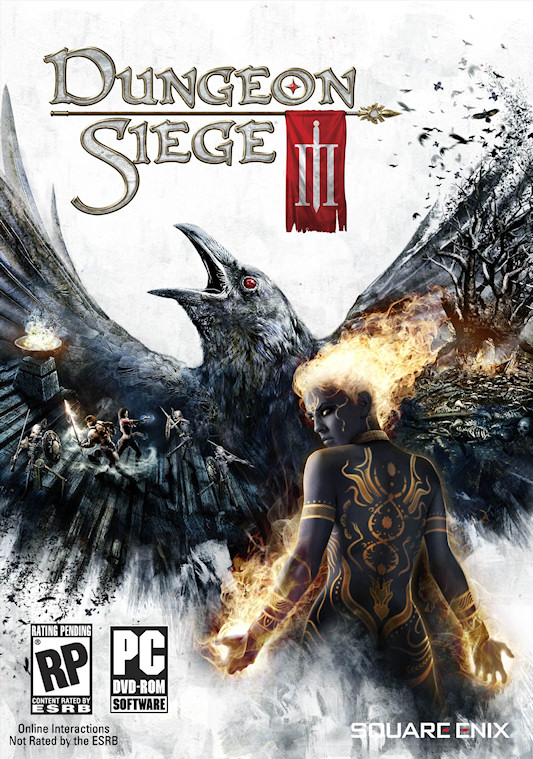Dungeon Siege III Preview
-
Category: PreviewsHits: 18799

Article Index
Page 4 of 5
Item drops in Dungeon Siege III follow the traditional white/green/blue rarity color scheme, with the aforementioned unique artifact items sporting a goldish orange color. If Palefang's death is anything to go by, bosses will traditionally drop 4-5 random items when they die. The equipment that drops is highly skewed in favor of the character(s) playing (rifles and muskets will rarely drop if you're playing Anjali, for example), but it's not impossible to receive an item nobody can use. All item types, save for rings and amulets, are designed with a specific character in mind. That means that Anjali won't be able to equip items meant for Lucas, and vice versa. This decision could prove to be controversial, but I suppose it also means that the only point of contention during a co-op game will be who gets to use the Amulet of the Gods that flew out of a barrel. From what I saw, weapons have dozens of statistics and effects that they can possess, including Doom (increased critical chance), Momentum (bonus attack speed), Block (better blocking ability), Chaos: Lightning (all four elements are supported, of course), Chaos: Bloodletting (inflicts bleed wounds), Chaos Vampire (chance to drain life), and many more. Defensive equipment shares many of the same attributes, though it's also worth mentioning that all armor animations are tiered and character-specific, meaning that no character will ever wear the same-looking armor and all armor you find at level 30 (or whatever the level cap ends up being) will look very impressive regardless of its stats.
The Onyx Engine and Art Design
Without a doubt, Dungeon Siege III is the best-looking Obsidian-developed game to date. Not only do the animations and buzzword-laden effects look amazing on PC (and slightly less so on consoles), but the camera swivels and zooms in smoothly and comfortably, too. There are two separate zoom modes (near and semi-far), and both suit their purposes well (the former being something of a vanity cam and the latter being your standard action RPG vantage point). You can tell the Onyx Engine suits this type of third-person RPG very well - it reminds me of a modernized version of the Snowblind Engine that powered the Baldur's Gate: Dark Alliance and Champions of Norrath titles - and based on what the team told me during my visit to the Obsidian offices, the toolset that accompanies it sports all of the options they've found to be most valuable through years of RPG development experience.
A colorful fantasy art style is utilized when moving through the game's early overland regions, but the castle, caves, and dungeons I saw had a foreboding and moody style to them. Some areas even had a steampunk feel to them, and as you might have expected, they were filled with automatons and bomb-tossing goblins (that flew across the screen when struck hard enough). The subterranean levels are fairly dark, but doorways and important objects are illuminated by deliberately placed candles and torches. The light being shed from such sources realistically dances on any characters that pass by and, in one of the dungeons I was shown, will even paint a sparkly sheen on underground rivers as they pass through.
The artists at Obsidian had specific design goals in mind when they approached each of the four characters, too. For example, Anjali's art design called for propane-inspired colors, so a vast majority of her attacks are comprised of a blue, white, and orange color mixture with an inky black perimeter. And to ensure that all of the weapon and spell effects fit such design goals, they were painted by hand and the 2D art was then converted into 3D and injected with the appropriate physics. The smoothness of the engine combined with this attention to detail is what really makes the game stand out in the graphics department.


